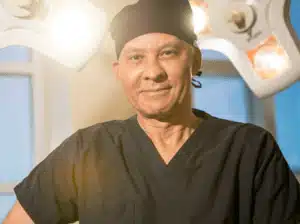Latest Posts
How Much Does Gynecomastia Surgery Cost in 2026?
With gynecomastia affecting nearly half of all men at some point in their lives, understanding the cost of gynecomastia surgery in 2026 has become crucial for those considering treatment. As healthcare costs continue to rise and surgical techniques evolve, the...
The Rise of Natural Male Chest Contouring in 2025
By 2025, male breast aesthetics are evolving. Men are moving away from overly sculpted chests toward more balanced, natural contours. The increasing popularity and social acceptance of cosmetic procedures among men reflect a broader movement toward self-care and...
How to Get Rid of Man Boobs: Your Complete Guide to Gynecomastia Surgery
Dealing with enlarged male breasts affects millions of men worldwide, with studies showing that up to 65% of adolescent boys and 35% of adult men experience some degree of breast enlargement at some point in their lives. While this condition, medically known as...
What Is Gynecomastia?
Gynecomastia, often referred to as man boobs, moobs, or simply male breasts is the presence of enlarged breast tissue, whether fatty tissue, glandular tissue, skin, or all of the above. Gynecomastia differs from pseudogynecomastia, which results only from excess fat tissue due to excess weight gain.
Gynecomastia can occur during puberty due to a person’s imbalanced and ever-changing hormone levels. Older men also experience reduced testosterone levels, which can cause an imbalance between estrogen and testosterone. Gynecomastia caused by steroids is also a known issue for bodybuilders and anyone who uses anabolic steroids.
Due to the wide-ranging causes of excess male breast tissue growth, it’s estimated that up to 70% of men will experience gynecomastia at some point in their lives, whether just for a few years during puberty or for much longer periods of time.
What Are The Symptoms of Gynecomastia?
Gynecomastia symptoms include:
-
Enlarged nipples and surrounding area, with or without nipple discharge.
-
Breast pain, soreness, or tenderness.
-
Excess glandular tissue beneath the nipple, in one or both breasts (feels like a lump that may be movable).
Occasionally, the appearance of true gynecomastia may cause uneven swollen glandular tissue, which may make one side of the chest larger. Gynecomastia may result in breast tissue growth in one or both breasts.
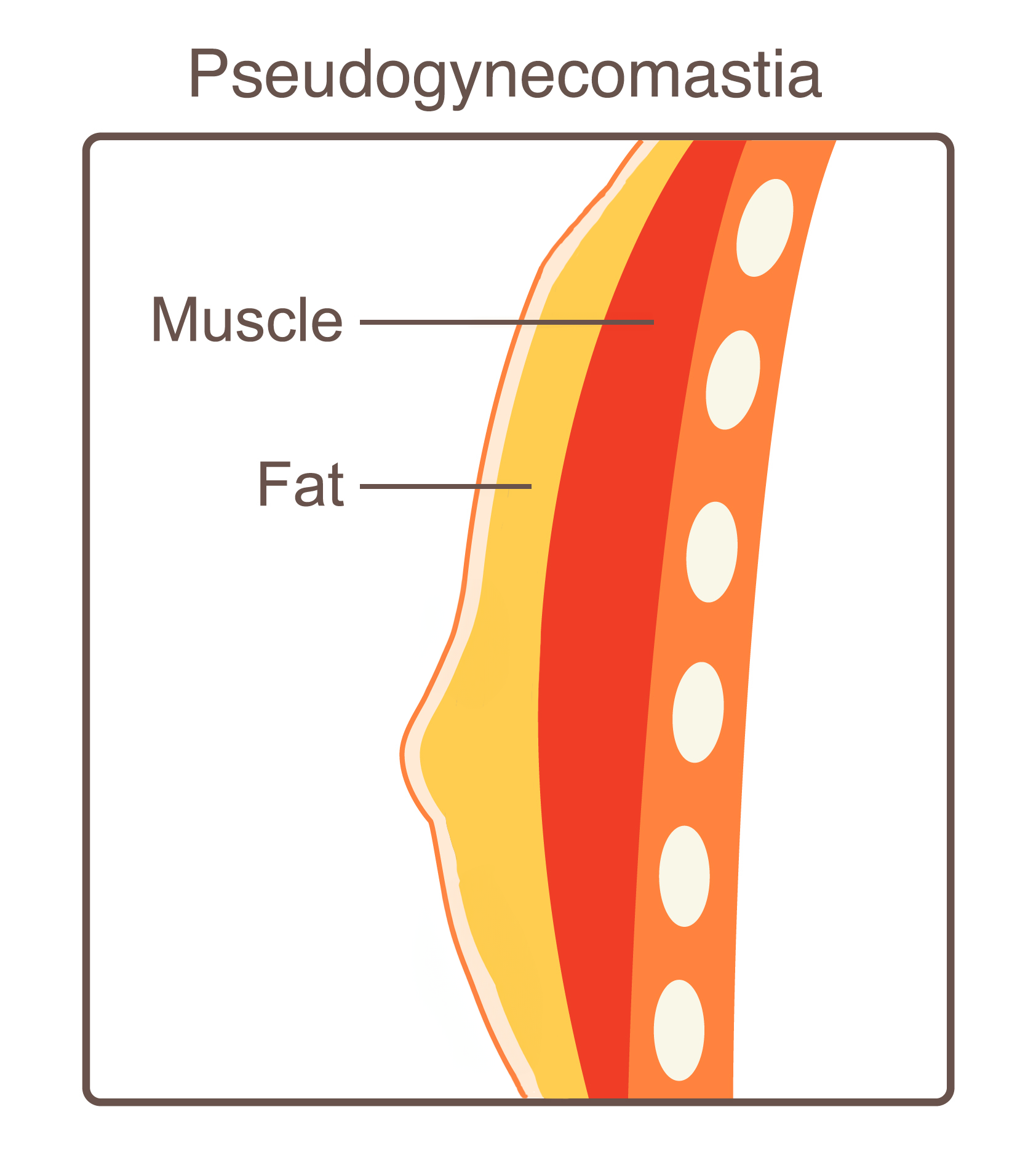
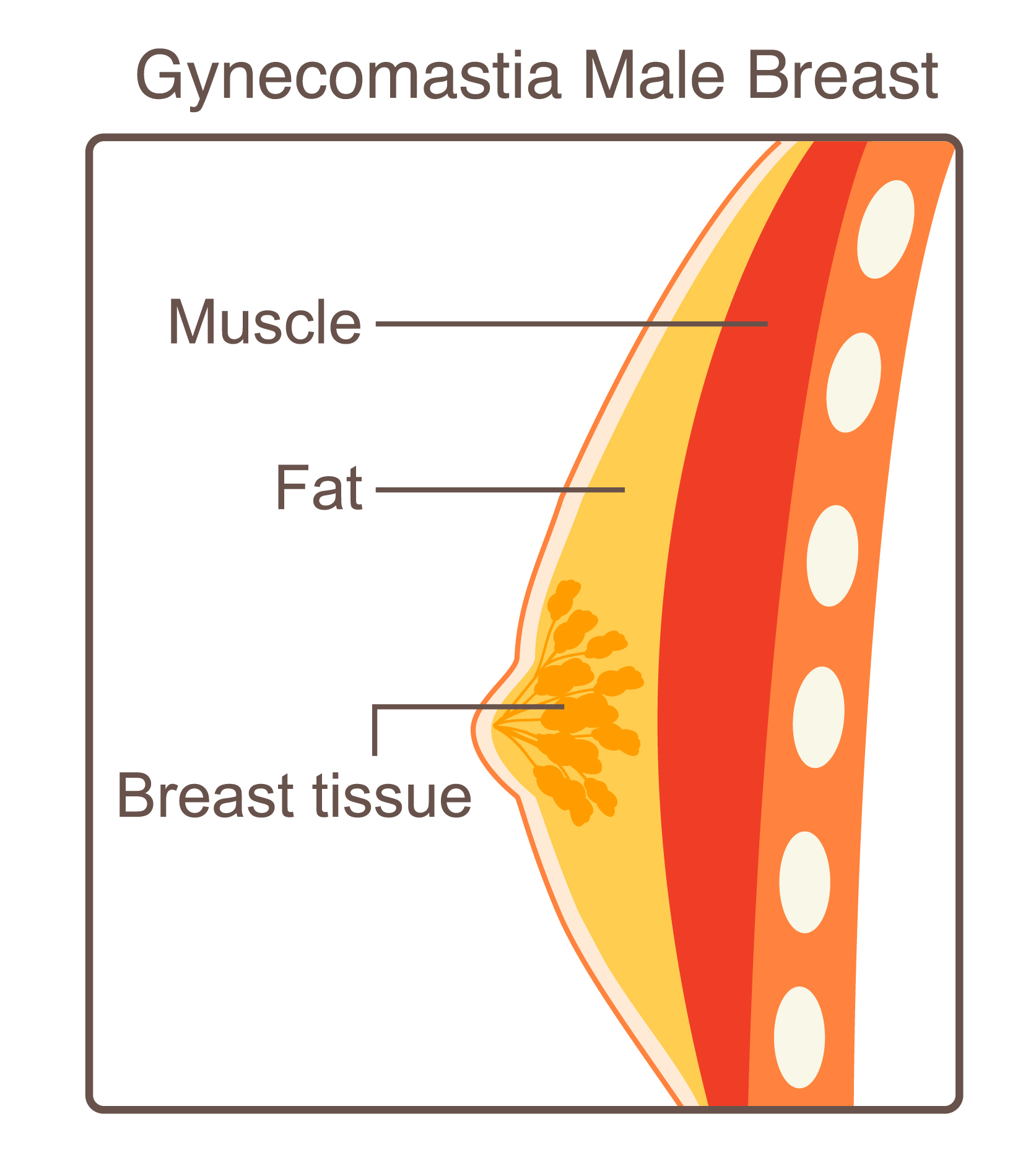
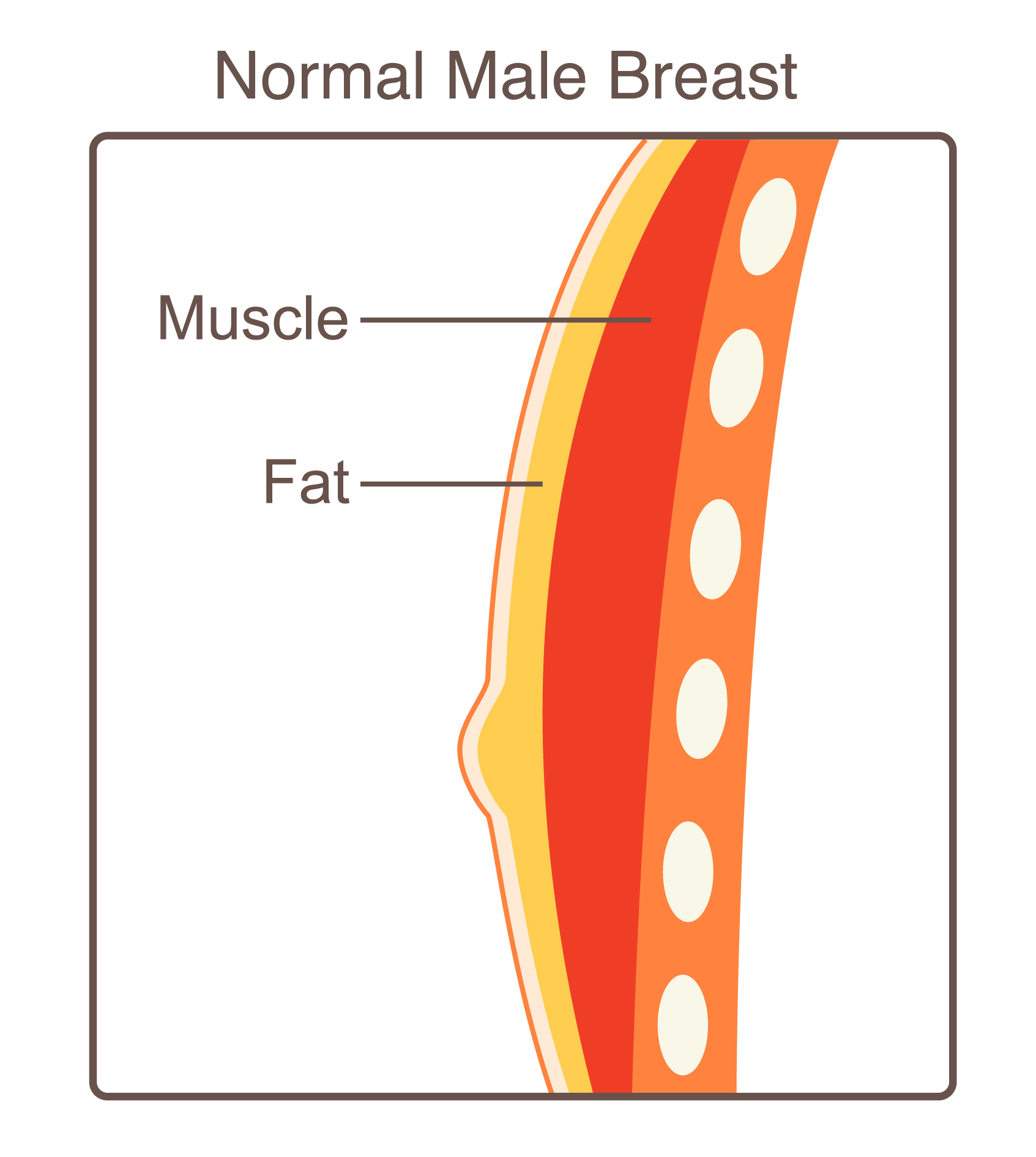
What Causes Gynecomastia?
The hormone imbalance responsible for male breast tissue growth can be caused by several factors, many of which are unknown, in addition to regular changes in the body like puberty and aging. This means the majority of cases are often called idiopathic gynecomastia, which refers to a benign condition that appears from one of many possible causes.
Aside from certain medications or medical conditions such as Klinefelter syndrome and kidney disease, research has shown the below substances may cause gynecomastia symptoms:
- Illegal use of anabolic steroids
- Alcohol
- Cannabis/marijuana
- Amphetamines
- Heroin/Methadone.
Approximately 10 to 25% of cases may be caused by certain drugs, with illegal steroid use being the number one drug-related cause of gynecomastia symptoms.

How is Gynecomastia Diagnosed?
Gynecomastia can be diagnosed by a gynecomastia specialist who will review your medical history and determine the cause of your symptoms by reviewing any medications and if you have used steroids without a prescription or any other illegal substances.
For a free-of-charge, virtual consultation about gynecomastia plastic surgery procedures, feel free to get in touch today.
Learn more about Gynecomastia Diagnosis Virtual Consultation
Gynecomastia Treatment
Your unique gynecomastia treatment may differ depending on your age, health, duration of the disease, and response to certain drugs. A hormone imbalance contributing to breast enlargement may be addressed by medication or tissue hormone treatment. Medications for gynecomastia have shown to be largely ineffective and the FDA (Federal Drug Administration) has not approved any drug for the treatment of gynecomastia.
In most cases, male breast reduction surgery is required to eliminate gynecomastia symptoms permanently.


Gynecomastia Grades
In breast reduction or gynecomastia surgery, surgical techniques differ according to the degree or severity of gynecomastia symptoms.
The American Society of Plastic Surgery has developed a classification system of four grades of gynecomastia to develop better gynecomastia treatments with more consistent results.
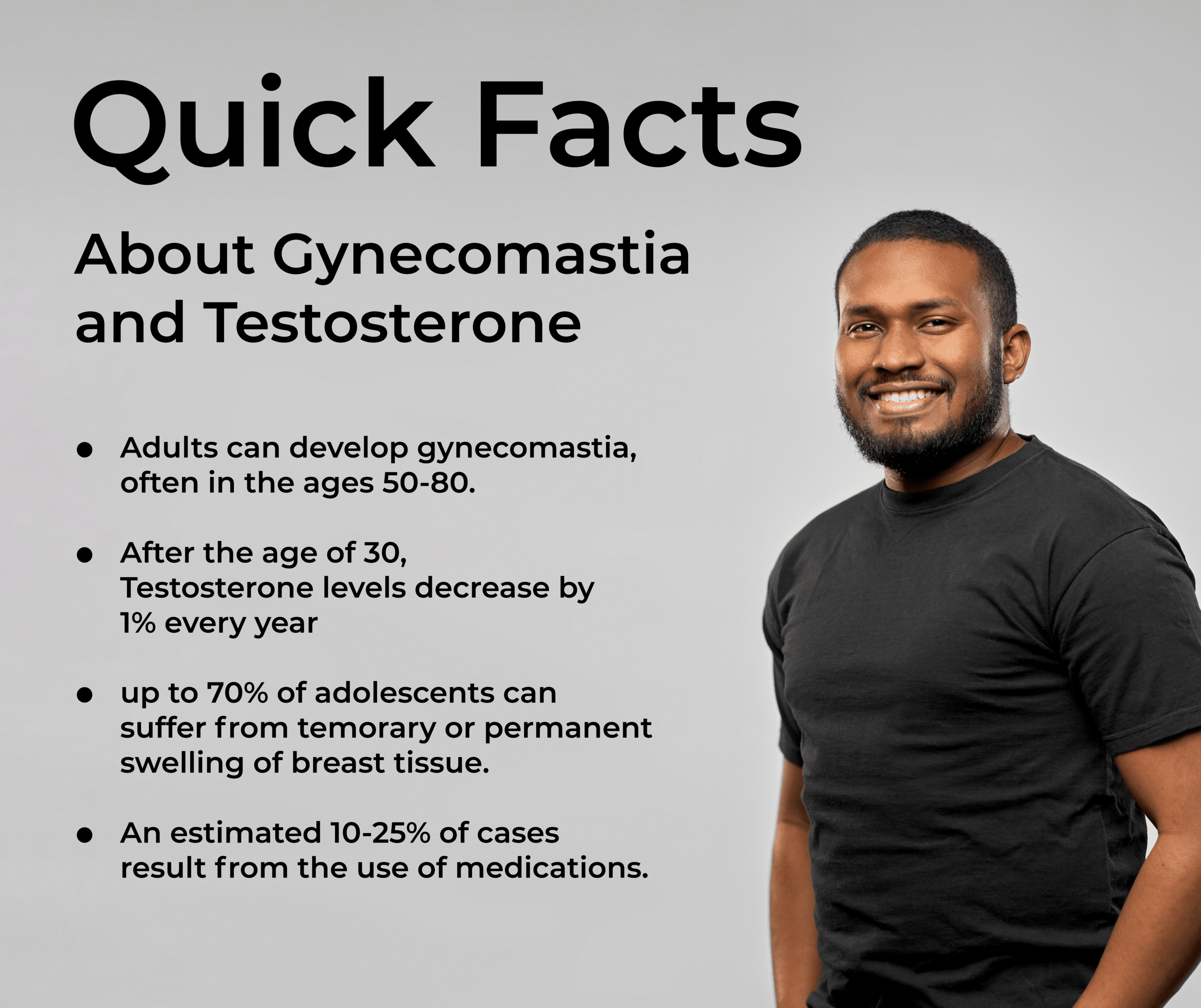
Gynecomastia Surgery Options

Dr. Delgado takes his time to evaluate your gynecomastia symptoms thoroughly before recommending the most appropriate gynecomastia surgery procedure to meet your individual goals. This will also depend on the degree of male breast enlargement, excess skin, and skin laxity present.
Gynecomastia surgery incisions for all techniques, apart from a double incision mastectomy, are made around the outer edge of the areola. Usually, once they have healed, they are very difficult to see.
All gynecomastia surgery options permanently remove the extra glandular tissue, so gynecomastia symptoms rarely come back after this surgery. Dr. Delgado uses a light general anesthesia to give him the most control and provide you with the safest and easiest surgical experience possible.
For a complimentary, virtual consultation about gynecomastia plastic surgery procedures, please complete Dr. Delgado’s inquiry form:
Gynecomastia FAQs

Can non-surgical procedures help reduce gynecomastia symptoms?
When the chest is enlarged due to an accumulation of adipose tissue (fat), non-surgical fat removal techniques such as CoolSculpting can help. However, any presence of glandular tissue cannot be removed through these methods.
Should I be concerned about male breast cancer?
An enlarged chest characterizes the condition known as gynecomastia. Man boobs caused by breast cancer are incredibly rare.
Do anabolic steroids cause gynecomastia?
Our bodies convert steroids into estrogen (within fat cells), which can cause steroid-induced gynecomastia.
Is gynecomastia caused by breast tissue?
Yes, Gynecomastia is an overdevelopment or enlargement of breast tissue, also referred to as glandular tissue.
For personalized information about gynecomastia plastic surgery procedures, please complete Dr. Delgado’s inquiry form.
Miguel Delgado, M.D., F.A.C.S is a world-renowned Board-Certified Plastic Surgeon granted by the American Board of Plastic and Reconstructive Surgery and a member of the American Society of Plastic Surgery and Aesthetic Society. Dr. Delgado has a surgical practice solely dedicated to cosmetic plastic surgery. He specializes in gynecomastia surgery and is the medical director of Gynecomastia.org, the oldest and largest gynecomastia forum dedicated to supporting, educating, and providing solutions for men with breast enlargement. Dr. Delgado celebrates 30 years of practice in San Francisco, California. He was voted the “Best Plastic Surgeon of 2017-2021.”
Gynecomastia.org does not provide medical advice, treatment, or diagnosis.

